Nuclear Energy 101
Primer on Nuclear Energy Economics
Dec 6, 2023
Hello!
Thesis: Nuclear energy is a clean, effective source of energy that has the potential to become the most popular form of clean energy in the future if only people recognized it for what it truly is.
Nuclear consistently gets a bad rap. Daily. For years.
Why?
Let’s start with history. Nuclear has a near-perfect record, yet the imperfections from the public perspective are severely detrimental to the general attitude. Here’s a quick overview from Wikipedia.
Credit: Courtesy of Exelon
Notable Event #1 - Three Mile Island, Pennsylvania - 1979
The Three Mile Island nuclear disaster occurred on March 28, 1979, at the Three Mile Island Nuclear Generating Station near Harrisburg, Pennsylvania. It was the most significant nuclear incident in U.S. history.
The problems began when one of the two reactors at the plant experienced a partial meltdown due to a cooling system malfunction. This prompted the evacuation of around 140,000 people from the surrounding areas.
This was the first (and currently only) major nuclear disaster on United States soil, yet rapidly increased the anxiety and stress related to the topic of nuclear reactors in the eyes of the people.
However, the government has not found any injuries, deaths, or direct health effects caused by the accident, including cancer exposure.
The Nuclear Regulator Commission cites, “A combination of personnel error, design deficiencies, and component failures caused the TMI accident, which permanently changed both the nuclear industry and the NRC. Public fear and distrust increased, NRC’s regulations and oversight became broader and more robust, and management of the plants was scrutinized more carefully. Careful analysis of the accident’s events identified problems and led to permanent and sweeping changes in how NRC regulates its licensees – which, in turn, has reduced the risk to public health and safety.”
Credit: FREOPP.org
Notable Event #2 - Chernobyl, Ukraine - 1986
The Chernobyl nuclear disaster occurred on April 26, 1986, at the Chernobyl Nuclear Power Plant in Ukraine. It is considered the worst nuclear power plant disaster in history.
The problems began during a safety test when one of the four nuclear reactors became unstable at very low power due to poor design and human error. There was a sudden uncontrolled power surge leading to a series of explosions, blowing off the heavy steel and concrete lid of the reactor core and spewing massive amounts of radioactive material into the atmosphere.
The resulting fire in the exposed reactor burned for over a week, releasing radiation equivalent to 400 Hiroshima bombs into the air. Two Chernobyl staff members died within hours of the explosions from acute radiation sickness. The nearby region was heavily contaminated, requiring the evacuation of over 350,000 people.
In the aftermath, at least 4,000 individuals have died from cancers linked to Chernobyl. Large areas of Ukraine, Belarus, and Russia remain too contaminated for habitation decades later.
This disaster rapidly increased worldwide concerns about the safety of nuclear power, leading to closures of some plants and spurring safety improvements at others. It also significantly increased regulatory barriers across many countries.
Credit: Jennifer Straka
Notable Event #3 - Fukushima, Japan - 2011
The Fukushima nuclear disaster occurred on March 11, 2011, at the Fukushima Daiichi Nuclear Power Plant in Fukushima, Japan. It is arguably the second worst nuclear accident in history, after Chernobyl.
The problems started when a 9.0 magnitude earthquake struck off the coast of Japan, triggering a large tsunami. The plant withstood the earthquake, but the tsunami flooded the backup electrical generators that powered the reactors' cooling systems, causing them to fail.
This resulted in three of the six reactors overheating and releasing hydrogen gas, leading to several hydrogen explosions that damaged reactor buildings and released radiation into the surrounding region over several days. Approximately 100,000 people living nearby were evacuated.
Such a recent disaster renewed concerns about nuclear safety worldwide.
Credit: Wikipedia
So, why does a country like France generate 68% of its energy from Nuclear Power?
Nuclear reactors are one of the cleanest, most consistent sources of energy available.
Yet, many people don’t know or understand that. Many people deal with energy, mostly to power their cars, heat and cool buildings, and as calories to fuel their day.
Nuclear energy is complex and can be difficult to understand. Many are uneasy when considering nuclear energy, for a good reason. For many, the word nuclear often has a negative connotation because of accidents (Chernobyl, Three Mile Island, Fukushima), and nuclear weapons.
In addition, many people have their own definition of climate change, and some have solutions they believe are viable. Nuclear is often not a part of the climate change conversation because while it is carbon neutral, it is not widely considered "renewable" (although it is generally more renewable than any fossil fuel).
Some people know that nuclear reactors are big enterprises that cost billions of dollars. They know that research is necessary to develop new technology, but not necessarily the costs and time associated. Many people do not know the breakdown of physical costs that go into a nuclear reactor. Few people probably know how highly regulated the nuclear energy industry is.
So let’s educate the people!
Nuclear Power 101:
A nuclear reactor is simple to understand.
Nuclear power is the use of nuclear reactions to produce power and electricity. There are different types of reactions, reactors, fuels, and power transformation mechanisms. Nuclear reactors are designed to sustain an ongoing chain reaction of fission; they are filled with specially designed, radioactive fuel and surrounded by a coolant liquid, which facilitates the process.
When the reactor starts, the radioactive atoms split, releasing heat. This heat is used to create steam, which pushes a turbine and is ultimately used to generate electricity. Nuclear power is very reliable as it runs 24 hours a day, producing a continuous energy output. There are currently 412 nuclear reactors worldwide, meeting about 5% of the global demand for energy and 13% of the world’s electricity supply.
Most people care about how safe nuclear reactors are. Contrary to popular belief, nuclear power plants are among the safest, most secure facilities in the United States. The U.S. Department of Labor says it is safer to work at a nuclear plant than at a fast-food restaurant, grocery store, or in real estate.
Apart from a few disasters, nuclear energy is extremely safe. Regulations in the nuclear power
industry are extremely strict and for this reason, the likelihood of a disaster is almost negligible. The Nuclear Regulatory Commission (NRC) puts these regulations in place to ensure another nuclear disaster does not happen again.
No radiation-related health effects have been linked to nuclear plants during the nearly 60 years of operation in the United States.
Given nuclear energy is a safe, reliable source of energy, why isn’t it more popular?
Currently, the public perception of nuclear energy outweighs the perceived benefits of investing in nuclear power. In economic terms, people aren’t demanding nuclear power, so there is no need to supply it.
In addition, the regulatory frameworks present within the United States are such that developing nuclear reactors takes billions of dollars and decades. This is exacerbated through the fact that within the United States, our nuclear reactor building expertise is rapidly dwindling.
Nuclear reactors have been commonly built in the United States from the 1950s through the 1980s with only 4 reactors being commissioned since then. As there are many different types of reactors, the nuclear expertise used to build these reactors is widely not available anymore. We know how to operate these plants now, but not build them. These were huge projects, as they required billions of dollars in investment and thousands of workers over decades of time to complete.
Nuclear power plants are huge projects. In the United States we haven’t been practicing how to build them, so we haven’t become good at building them. Each time we go to build one, it is like we are starting over from scratch and therefore takes more money and manpower than expected. Many don’t live to see operation.
So, given the United States doesn’t have current expertise in nuclear power plant construction and the regulatory framework that currently exists isn’t conducive, why do I think nuclear is still the energy of our future?
Let’s start with the economics behind the problem. Global energy production is expected to increase by 50% - 100% over the next 25 years. Where is that going to come from?
Current supply is expected to be from fossil fuels (oil, gas), renewables (solar, wind, hydro), biomass, and nuclear. Many people expect renewables to produce most of the new energy needed.
Yet, nuclear power (fueled only by Uranium) has the power to fuel the earth with energy for the next 4 billion years. So when we talk about renewable sources, generally people consider wind and solar to be “infinite” sources of energy, but I’d argue that 4 billion ~ infinite at least in terms of human development.
All of this is only possible through innovation, expertise, and public pressure.
Anywho, that’s all for today.
-Drew Jackson
Disclaimer:
The views expressed in this blog are my own and do not represent the views of any companies I currently work for or have previously worked for. This blog does not contain financial advice - it is for informational and educational purposes only. Investing contains risks and readers should conduct their own due diligence and/or consult a financial advisor before making any investment decisions. This blog has not been sponsored or endorsed by any companies mentioned.






